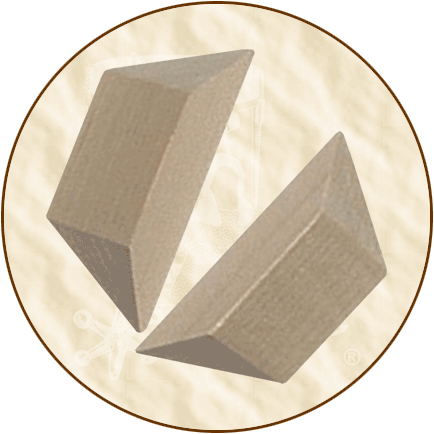.
Continued from product description on
Classic Toys & Puzzles' Page
Five...
Historical
Background: Puzzles have been a source of amusement and
entertainment since the 3rd century B.C. It was in Greece that
the oldest known "mechanical puzzle" consisted of a
square cut into 14 parts. The object of this game was to create
as many different shapes from these parts as possible.
As early as the 1600s, "puzzle-locks" were invented
in Iran. There is mention of a game called "Sei Shona-gon
Chie No-Ita" in a 1742 Japanese book. At the turn of the
19th century, the Chinese Tangram puzzle was created. The Tangram
puzzle became a popular pastime in China, and its popularity
spread to Europe and North America over the next two decades.
Tangram puzzles became so popular, in fact, that a company
called Richter (Rudolstadt, Germany) began manufacturing Tangram-like
puzzles of different shapes and sizes. These puzzles would later
be known as "Anker-puzzles."
If there were a "golden age of puzzles," it was
probably around the end of the 1800s and early part of the 20th
century. It was during this period that the first patents for
puzzles were granted. Since then, new types of puzzles have been
created due to the inventions of new materials (particularly
plastics) and manufacturing technologies (such as injection-tool
molding).
Besides mechanical puzzles, there are other types of puzzles:
"assembly puzzles," "disassembly puzzles,"
"interlocking puzzles," "disentanglement puzzles,"
"fold puzzles," "lock puzzles," "trick
vessels," "impossible objects," "dexterity
puzzles," "letter-dissection puzzles," "sequential
movement puzzles," and "simulated mechanical puzzles"
(mechanical puzzles on computers).
Our Pyramid Puzzle (2103) was invented by E.T. Johnson in
1940. His puzzle would later be marketed under the name "Pyramid
Twins." Today, the Pyramid Puzzle is recognized as one of
the world's most ingenious two-piece puzzles ever invented! And
because of its deceiving simplicity, the Pyramid Puzzle remains
a popular puzzle for kids of all ages as well as puzzle collectors.
Fun
Fact: The largest known puzzle collection is in England
and contains around 50,000 puzzles. It took seven people over
100 years to acquire puzzles for this collection!
Fun
Fact: The Pyramid Puzzle is a four-sided polyhedron called
a tetrahedron. This type of pyramid is one of the five Platonic
bodies that includes the hexagon (cube), dodecahedron, octahedron,
and icosahedron.













